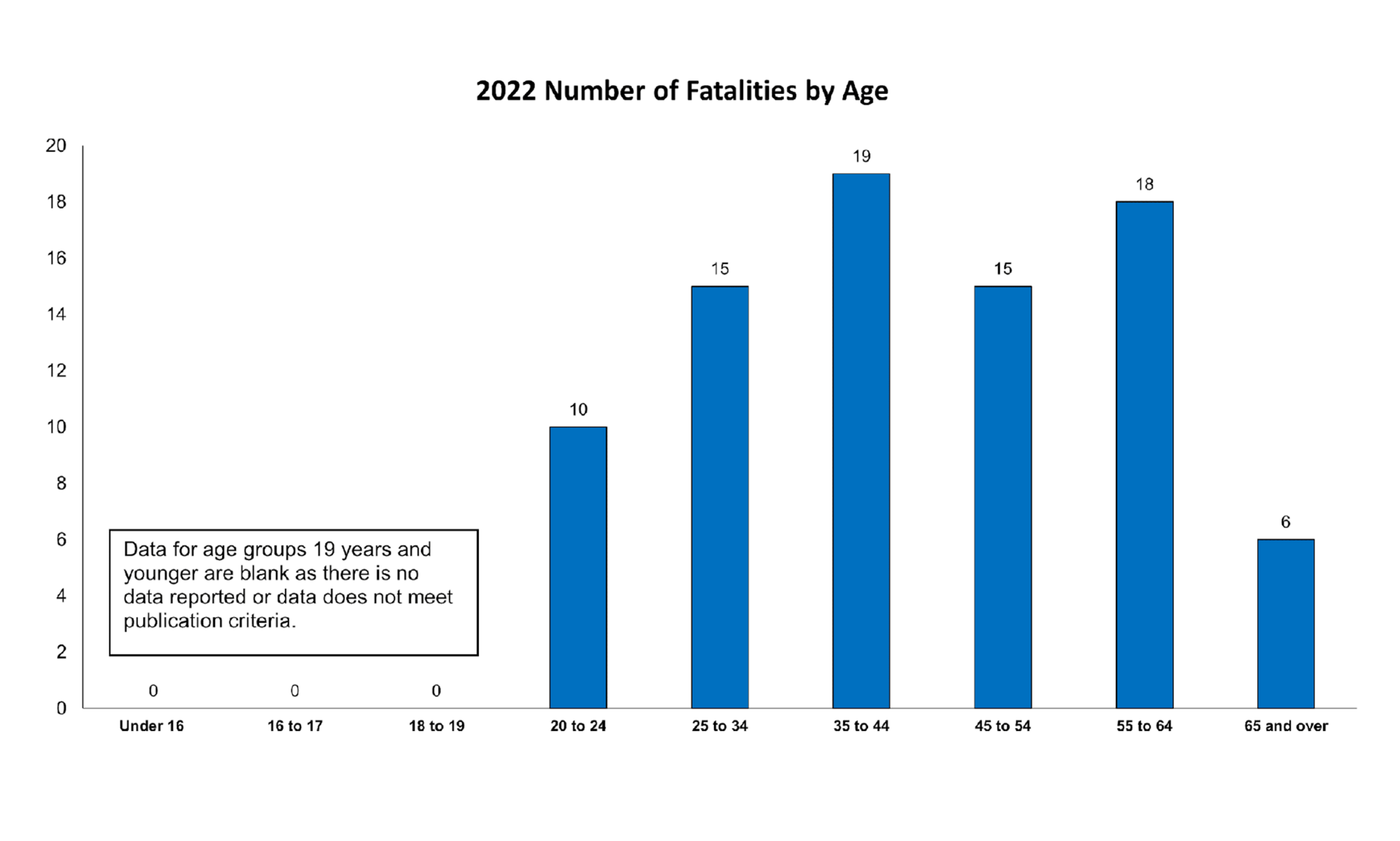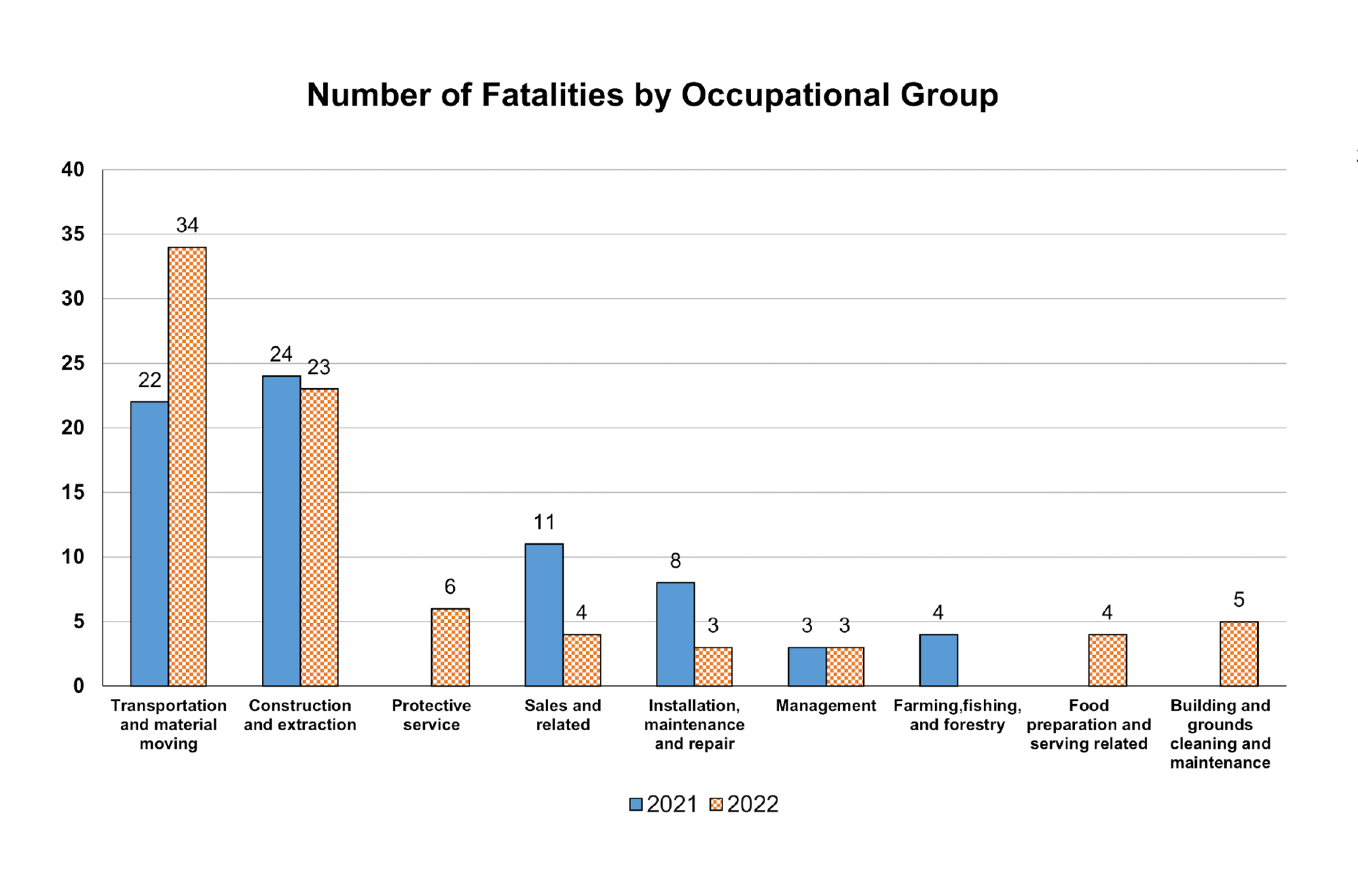(DENVER) – The Census of Fatal Occupational Injuries (CFOI) program conducted by the Colorado Department of Labor and Employment’s Office of Labor Market Information (LMI), in cooperation with the U.S. Department of Labor and the Bureau of Labor Statistics (BLS), reveals Colorado had 89 work-related fatalities in 2022. Nationally, a total of 5,486 workers died from a work-related injury in the U.S. in 2022, a 5.7 percent increase from the 5,190 workers in 2021.
The figures, available on the Bureau of Labor Statistics website, indicate work injuries involving transportation remained the most common cause of work-related deaths in Colorado in 2022. Violence and other injuries by person or animals were the second-most prevalent cause of work-related deaths. Some numbers below are not included in totals, because some data do not meet the BLS publication criteria.
2022 Census Profile
Major findings of the Census include:
- A total of 89 fatal occupational injuries were recorded in 2022, a 7.3 percent decrease from 96 in 2021.
- There were 83 work related deaths in 2022 involving wage and salary workers, down from 84 in 2021. Self-employed worker fatalities decreased from 12 in 2021 to six in 2022.
- Transportation incidents were the leading cause of fatalities and up from the prior year by 32.0 percent. Transportation incidents increased from 25 in 2021 to 33 in 2022 and continue to lead all fatality events for at least the last 10 years.
- Fatalities due to violence and other injuries by person or animals were down 21.7 percent over 2021. In 2022 there were 18 incidents and 2021 had 23 incidents.
- Falls, slips and trips are the third leading cause of fatalities in 2022. They accounted for 15 deaths and are down from 17 in 2021.
- Fatalities due to exposure to harmful substances or environments decreased 46.2 percent over 2021. In 2022 there were seven incidents and in 2021 there were 13.
- Contact with objects and equipment accounted for 12 work related deaths resulting in a 29.4 percent decrease from 2021 to 2022.
Worker Demographics
- Men accounted for 81 (91.0 percent) of the fatal work injuries, while women accounted for eight (9.0 percent).
- Women worker fatalities in 2022 are down from 2021. In 2022, there were eight and in 2021, there were 15.
- White (non-Hispanic) workers accounted for 48 (53.9 percent) of the fatalities. Black or African-American (non-Hispanic) accounts for four (4.5 percent) of the fatalities. Hispanic or Latino workers accounted for 31 (34.8 percent) of the fatalities. American Indian or Alaska Native (non-Hispanic), Asian (non-Hispanic), and Native Hawaiian or Pacific Islander (non-Hispanic) data is suppressed or there are no incidents reported and cannot be published.
- Workers aged 20 to 24 saw 10 work related fatalities. Data for this age group has not been released since 2018 when there were three incidents.
Chart: 2022 Number of Fatalities by Age

Source: Census of Fatal Occupational Injuries (CFOI) program. Note: Data for age groups 19 years and younger are blank as there is no data reported or data does not meet publication criteria.
Industry Profile
- Fatal injuries in Construction (19) lead in total deaths by industry, followed by Natural resources and mining (8) and Leisure and hospitality (7).
Occupation Profile
- Transportation incidents continue to be the leading cause of work related fatalities in the Transportation and material moving occupation.
- Contact with objects and equipment are the leading cause of work related fatalities in Construction and extraction occupations.
Chart: Number of Fatalities by Occupational Group

Source: Census of Fatal Occupational Injuries (CFOI) program. Note: Data that is missing for 2021 or 2022 either does not have data reported or data does not meet publication criteria.
Program Background
In an effort to compile data that is as complete as possible, the CFOI program uses diverse sources to identify, verify, and describe fatal work injuries. Source documents, such as death certificates, coroners’ reports, workers’ compensation claims, U.S. Occupational Safety and Health Administration reports, and other records are cross-referenced to gather key information about each workplace fatality, such as the particular occupation and industry in which the fatality occurred, worker demographics, equipment or machinery involved, and circumstances of the event. The CFOI program compiles the most complete, verifiable count of fatal occupational injuries in the U.S.
2023 data will be publicly available in December 2024.
For additional information, please visit www.bls.gov/iif/ or colmigateway.com.
Resources Mentioned